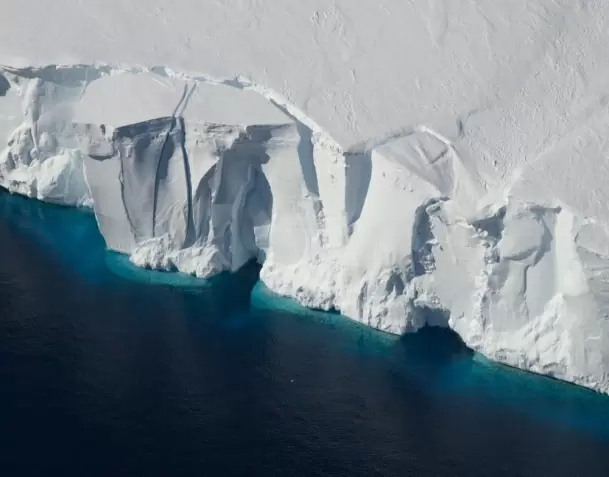Quest to discover Antarctica's oldest ice
10-September-2021

The Oregon State University will lead a National Science Foundation-funded effort to discover Antarctica's oldest ice and learn more about how the earth's climate has changed over the past several million years.
The Center for Oldest Ice Exploration, or COLDEX, will be created under a five-year, $25 million Science and Technology Center award announced on Thursday.
The center will bring together experts from across the US to generate knowledge about earth's climate system and share this knowledge to advance efforts to address climate change and its impacts.
"This is fundamental exploration science," said Ed Brook, a paleoclimatologist in OSU's College of Earth, Ocean, and Atmospheric Sciences and the principal investigator for COLDEX.
"What we're after is to see how the earth behaves when it is warmer than it has been in the last one million years. In order to do that, we have to find and collect ice cores that go back that far."
The oldest continuous record of Antarctic ice, collected by drilling miles down from the continent's surface, currently goes back about 800,000 years. The researchers hope to find a continuous record that goes back 1.5 million years, Brook said.
"The characteristics of the climate system were really different in the period between 800,000 years ago and 1.5 million years ago," he said.
Brook and COLDEX collaborators also hope to locate much older ice, perhaps up to three million years old and even older. Ice that old is not likely to be found in a continuous record, but initial research shows that patches of older ice are trapped in the mountains around Antarctica.
"This ice and the ancient air trapped in it will offer an unprecedented record of how greenhouse gases and climate are linked in warmer climates and will help to advance our understanding of what controls the long-term rhythms of earth's climate system," Brook said.
COLDEX is one of six new science and technology centers announced by the National Science Foundation, which currently supports 12 centers, with the last group funded in 2016.
The objective of the program, established in 1987, is to support transformative, complex research programs in fundamental areas of science that require large-scale, long-term funding.
Oregon state is well qualified to lead COLDEX because the university has a growing polar science program, Brook said.
The university also is home to the Marine and Geology Repository, one of the nation's largest repositories for oceanic sediment cores that also houses Antarctic ice core samples stored in a freezer kept at 20 degrees below zero Fahrenheit.
But the quest to find Antarctica's oldest ice is a collaborative affair.
University partners on the project include Amherst College; Brown University; Dartmouth College; Princeton University; University of California, Berkeley; UC Irvine; UC San Diego; the University of Kansas; University of Maine; University of Minnesota, Duluth; University of Minnesota, Twin Cities; University of Texas; and the University of Washington.
"Drilling ice cores is super hard, very expensive and can take years of planning," Brook said.
"We'll be doing a lot of modeling and also developing new tools to help us pinpoint the best locations to search - IANS
Film Fraternity Grieves Sreenivasan’s Passing; Rajinikanth, Resul Pookutty, Prithviraj Pay Homage
US Launches Airstrikes On ISIS Targets In Syria In Retaliation For Deadly Attack
Over 1 Lakh Voters Deleted From Stalin's Kolathur Seat In TN Draft Electoral Roll
Seven Elephants Killed as Rajdhani Express Hits Herd in Assam; Coaches Derailed
Top Maoist Commander With Rs 5 Lakh Bounty Gunned Down In Bijapur









